PADI vs SDI
What’s the difference between PADI and SDI and which agency should I use?
Updated : 12/4/25
The direct and correct answer, in my opinion to this question, is that whether you use PADI or SDI for your training it doesn’t matter, they both have the same end goal which is to certify a student to be a competent, safe scuba diver.
The main thing to take into consideration is not which training agency you’re going to be using, but who your scuba instructor is.
For instance, a new PADI or SDI instructor will follow the course guidelines and train the minimum requirements to achieve completion of required standards.
In saying this, this is not bad practice, but having an instructor who has years of different diving experiences from all over the world and has taught for several different agencies, will more than likely give you a greater in depth training experience as they have an array of knowledge and experience from a variety of sources to conduct their training from.
I have been lucky to have taught PADI, SDI and SSI but it doesn’t matter what agency I am training with, I can still fulfil the training standards of that agency by using elements of all 3 agencies. There are slightly different variations within all of them and I like to take the best and most practical parts of each.
So instead of teaching one way, I like to make it known that in some cases there are many ways of doing the same thing. Depending on which agency you choose you will have to complete the skill to the agency’s standard within the course, after that the diver has the knowledge and option to change the way they do the skill to what makes them more comfortable.
The moral of the story is your instructor is key.
But there are certain things that you should know as a student, and wannabe instructor that can persuade your choice of agency.
Now that you have my straight answer, let’s dig a little deeper and learn a bit more about both PADI and SDI and try to narrow the options to your circumstances.
What is the background of PADI & SDI?
PADI – When you think about scuba diving and training; PADI (Professional Association of Diving Instructors) is always first to mind.
They are inevitably the biggest dive agency in the world with over 6,600 dive centre’s and resorts operating in 186 countries and territories around the world with over 128,000 professional members within the industry, and if you think that’s impressive, since 1966 PADI have certified over 30 million divers worldwide.
SDI – Now SDI (Scuba Diving International) even though it was only founded in 1998 it has a wealth of dive training knowledge as it was the birth baby of TDI (Technical Diving International) which was founded in 1994 and is regarded as the leading technical diving training agency. SDI since then has had huge growth with now having 26 Regional Offices servicing more than 100 countries and continues to be one of the fastest growing training agencies in the world.
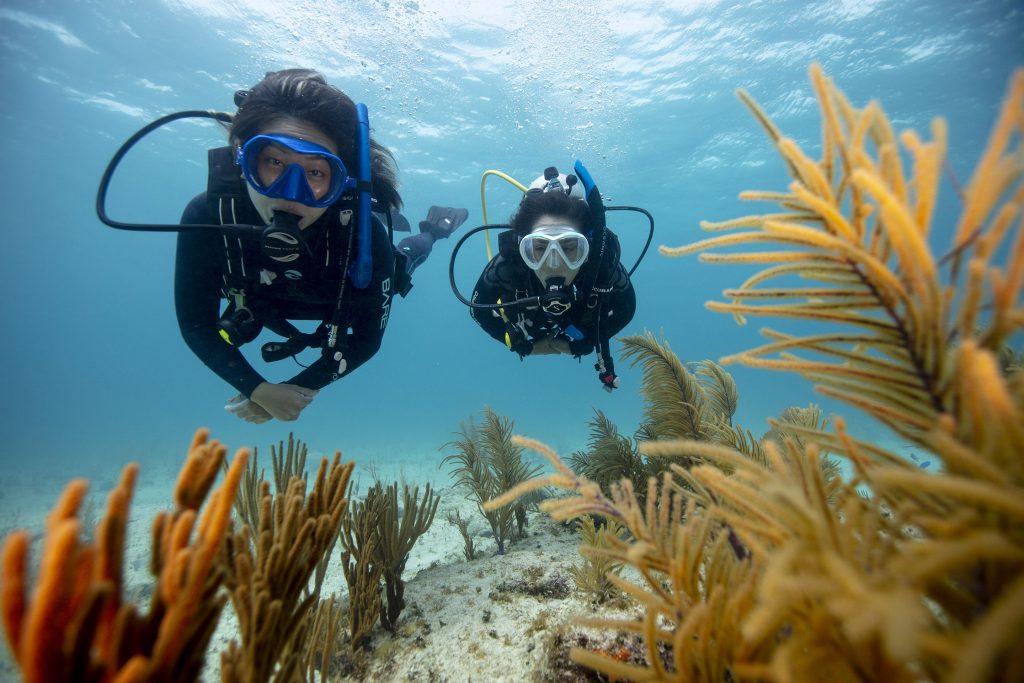
Training Materials
When it comes to the academic portion of the course both SDI and PADI offer eLearning as their preferred way to conduct the theory. You are able to go down the old school route of using a physical manual, although not for all of the courses.
By going with the eLearning option you will be able to go through the course at your own pace completing the knowledge reviews at the end of each section and then following it up with a final exam at the end.
SDI Knowledge Development
SDI allows you to complete the eLearning through their website via desktop, tablet or mobile. You would need to create your account before being able to access the course but once done, you would just need to sign up to the course by entering the eLearning course signup code which you should have received from your Facility or Instructor.
The site is extremely easy to navigate and use, also very well optimised to whichever method you choose to use for the eLearning, there is also the ability for offline access where Students can download a PDF version for use, but you will need an internet connection to complete the quizzes and final exam.
Although it is not an SDI requirement to complete the theory before any in water training it does make more sense to get it done prior.
Getting the theory done will give you the upper hand and a better understanding during your confined and open water sessions, you would probably find that most dive facilities would have you finish the theory before moving on to the in water sessions as part of their course, having the knowledge before hand certainly makes the training safer and more fun for both students and instructors.
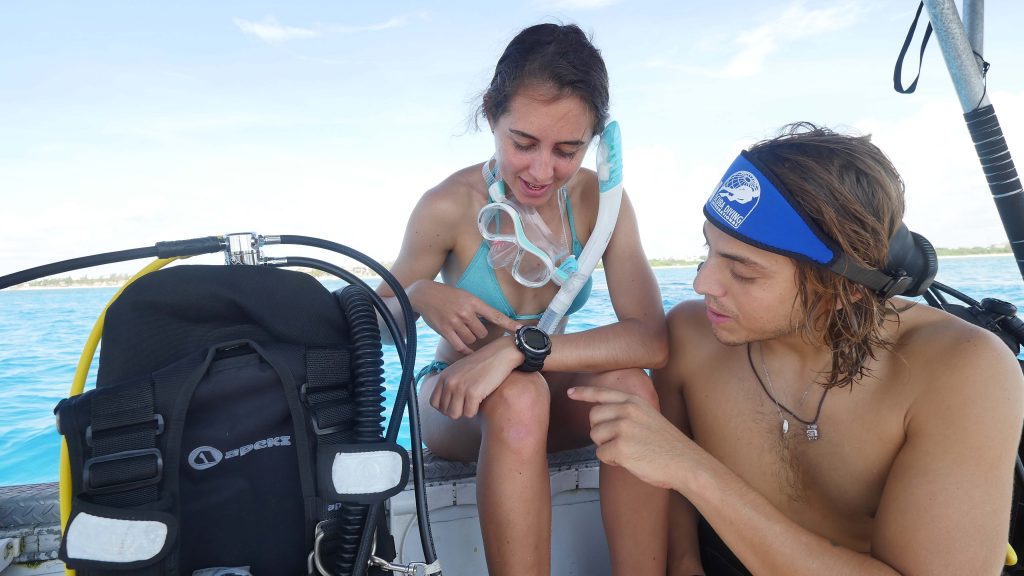
Whilst eLearning is a relatively new model to scuba education, compared to the traditional classroom based learning it does allow for flexible self study which provides the best combination of convenience, enjoyment, and effective learning. Although you don’t have access to an instructor like you would in a classroom environment, your progress will be monitored by your facility/instructor who will be available by phone or email if you have questions. You will also be able to use the live chat on the SDI website where you can talk and ask questions to an instructor at world headquarters.
Online Instructors will be able to talk, Monday – Thursday 9am – 5.40pm and Friday 9am – 4.30pm (Eastern time) so you’re not completely left to your own devices with help always there if needed.
Once you have completed your eLearning you should then, with your instructor, go over any questions you answered incorrectly until you have an understanding and are happy with the explanations given. Also it would be a good time to ask any other questions you may have about the theory or course.
PADI Knowledge Development
PADI offers both eLearning and manual options for their scuba diving education courses, which option you choose all depends on the dive centre you choose to do your course with. So be sure to contact them first, they will be able to inform you of which method they use.
The best way to sign up for a PADI course is to first find a PADI dive centre you want to do the course with, once found, the centre will assign you through their PADI pros account where you will then receive an email from PADI with an eLearning code and details of how to set up your online account.
Once your profile is set you are able to then enter the eLearning code you received via email to start your eLearning course.
I find the PADI eLearning courses to be extremely detailed and very easy to use and navigate for your online learning, there videos and imagery are descriptive and easy to understand.
As it’s an online course and you can learn on the go, PADI also allows you to download the course material to self study offline using the PADI Training App. Although the program is self study and at your own pace, once started, the program is valid for 12 months from the last saved knowledge development segment, so make sure you get it done.
Your eLearning progress will also be monitored by your PADI dive centre / Instructor and you are able to contact them if you need help with anything along the way, as well as contacting your regional PADI department via phone or email for any training related questions.
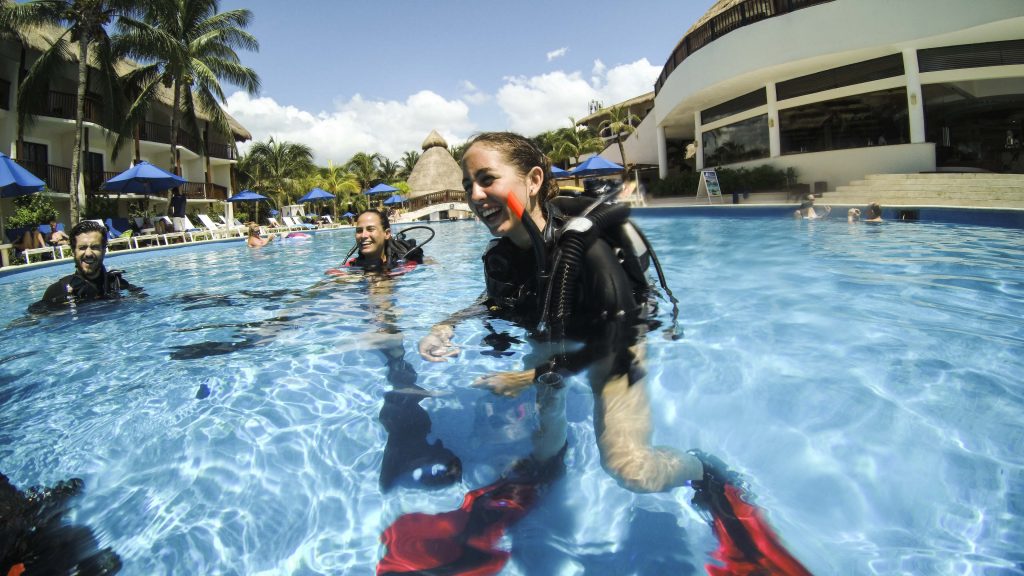
Before any in water training, I would always advise to complete all theory so it gives you a better understanding and more enjoyable experience, but students would be able to attend all confined water sessions, only after completing either Knowledge Development Session 1 or by listening to the Discover Scuba Diving knowledge development briefing, but this must be done before confined dive 1.
Once again most PADI dive centres/Instructors would have you complete the theory prior to any in water training.
Which has the highest Safety and Training Standards
Both PADI and SDI are members of the WRSTC (World Recreational Scuba Training Council) and ISO (International Organisation for Standardisation).
Being part of these shows that they are held to the highest minimum training standards for scuba diving courses which ensure quality, safety, efficiency, and interoperability.
Similarities and differences between PADI & SDI
Let’s look into the differences and similarities between PADI & SDI to give a better understanding of what each has to offer from the other.


PADI & SDI Similarities
- SDI & PADI are both recognised and respected globally, whichever one you choose both will be accepted worldwide.
- Each has a structured course overview where you can see diver progression from beginner to professional levels.
- Each provides both online and manual hardback based theory knowledge development.
- They have the ability to continue diver education with a large choice of speciality courses to choose from.
- PADI & SDI divers have community support.
PADI & SDI Differences
- Where PADI courses are structured by standards, which must be followed a bit like a script, SDI instructors are given a lot more flexibility when it comes to the course structure which allows for student-centered teaching.
- PADI roots are deep within the recreational dive market, where SDI came out of the technical side of diving (TDI)
- PADI has greater reach around the world when it comes to countries and amount of centres.
- PADI training materials can be more expensive than SDI which can make their courses more expensive, but it does depend of the instructor, centre or where you are in the world as there are no rules around the pricing of courses.
- SDI’s marketing is much smaller than the galactic PADI marketing.
- PADI still teach use and understanding of dive tables but also include computer understanding.
- SDI is primarily computer based teaching with little mention or teaching of the dive tables during your beginner courses.
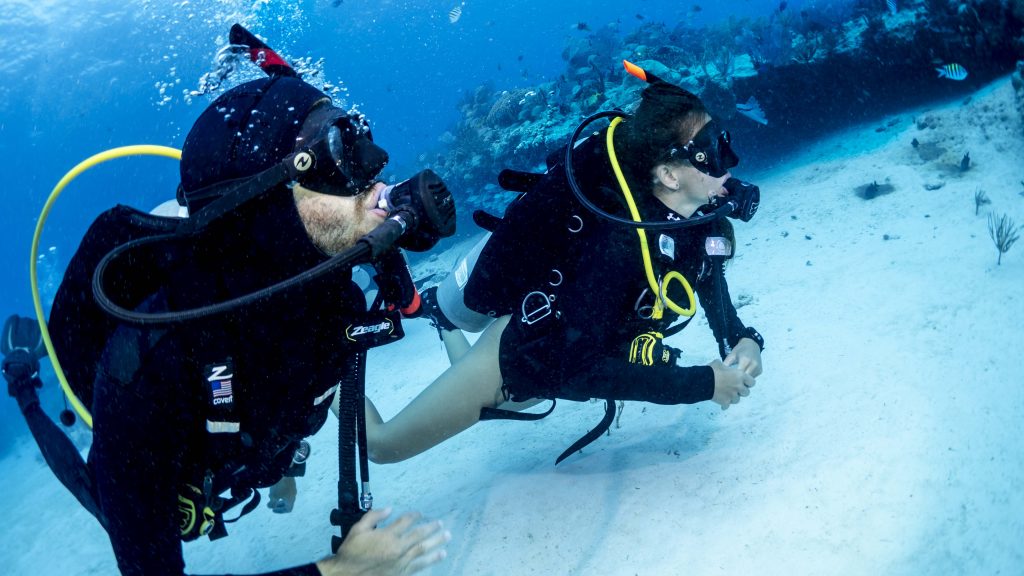
Considerations for New Students
As a brand new student learning to dive there are some factors to think about when picking an agency:
- You might be limited to what agency you can train with locally due to availability in your area.
- If you want more flexibility to your training schedule then SDI can offer this option but do check with what’s around you.
- If you’re planning on doing your theory and pool training at home then choose to go abroad to do your open water dives, I would suggest going with PADI if you can, as their reach around the world is much bigger than SDI, but that’s not to say you can’t do it with SDI. Best thing is to talk to your instructor about your plan and where you’re looking to complete your open water and they should be able to best advise you.
- If you’re looking to become a professional and work as a divemaster / instructor then PADI does offer more locations around the world, so the chances are higher of picking up work somewhere exotic. “If you’re lucky”
- If you want to get into the technical side of diving with the likes of cave, rebreather, decompression diving then with SDI’s background coming out of TDI, SDI would be your best option as they truly are the pros in the technical field.
Considerations for Instructors
- There are more PADI dive centres around the world than any other dive agency so the likes of finding a job are higher being a PADI instructor.
- The yearly renewal for SDI is cheaper than the PADI yearly renewal.
- SDI allows for flexibility in it’s training of skills by allowing you to move things about, but make sure that you teach all skills needed for both confined and open water, if ever in doubt please refer to the WRSTC website for the minimum training standards for the course in question.
I find this area to be very grey as there are no defined “flexible skills”.
Unlike PADI there is no definitive guidance on what skills must be completed in which section, whether it be in confined or open water and what skills are optional.
Another way to make sure your ticking all the necessary boxes is to use the confined / open water slates you get in your instructor pack, you don’t have to follow the order but you can use the slates to make sure that you are including all the needed skills for course completion.
- The online chat provided on the SDI site is incredibly helpful if you have any questions, they are extremely friendly, knowledgeable and provide an answer very quick. I can personally vouch for the excellence of this online service as I used it a lot during my first few months of becoming an SDI instructor. Their response time of answering questions or solving problems is quick and with the upmost professionalism. Highly recommended service for instructors and students.
- SDI allows you as the instructor to dictate the structure of your course and move things around to suit you and most importantly your students, whereas PADI has rigid standards which must be followed during training. If you derail from the structure of their training standards then this can possibly put you in a tricky legal spot if anything was to go wrong or come back to you in the future, PADI are less likely to have your back in court if you have breached their ordered training standards.
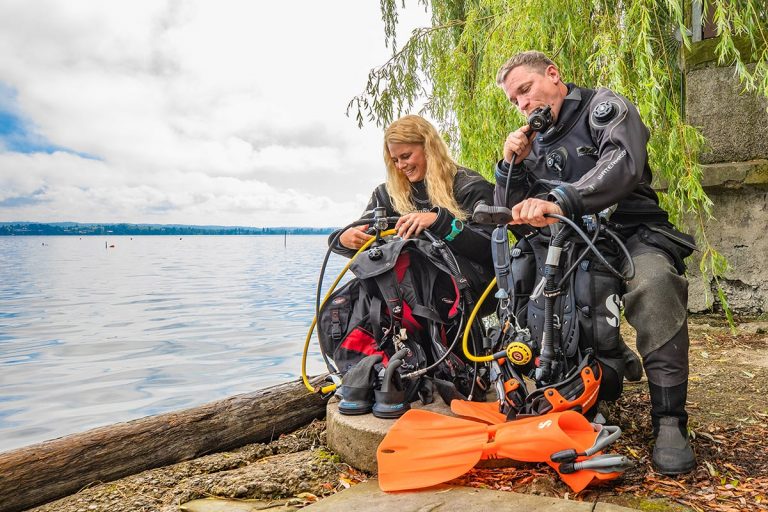
Summary
SDI and PADI both have online training programs that are sleek, streamlined and provide fantastic scuba diving education with the ability to fit it in to a busy life.
The ability to access them through a multitude of devices adds to the flexibility as well as being able to study offline which leaves no excuse to take on the knowledge given in these eLearning courses.
Make sure to research your instructor and centre, don’t be afraid to ask questions. If the Instructor or centre are unwilling or unhelpful in your queries then move on.
